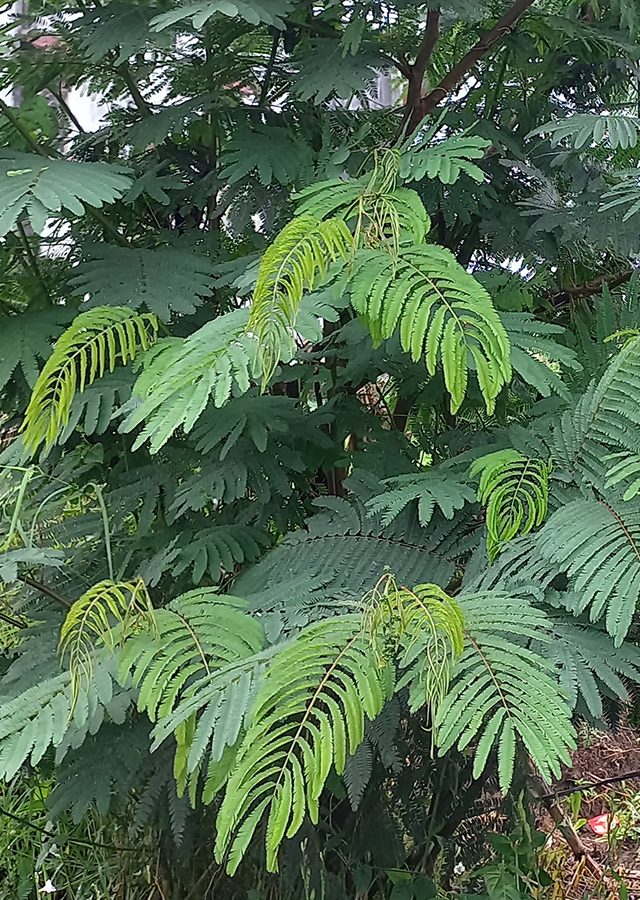Traditional Herbs from Calliandra houstoniana var. calothyrsus
blood_cleanser
- Prepare enough red calliandra flowers and wash them until clean.
- Boil the flowers in water until boiling.
- Strain the boiled product.
- Drink while warm.
sedative_medicine
- Prepare the flowers, leaves and bark of red calliandra flowers then wash them until clean.
- Boil all the ingredients until boiling.
- Let them sit until warm/cool then strain.
- Drink the boiled product.
What is Calliandra houstoniana var. calothyrsus Looks like??



Parts of Calliandra houstoniana var. calothyrsus that could be used
- Leaves
- Bark
- Flowers
Calliandra houstoniana var. calothyrsus Distribution
Calliandra houstoniana var. calothyrsus, native to Mexico, Central America, has been widely introduced in agroforestry systems in tropical and subtropical regions of the world. This plant is a fast-growing, nitrogen-fixing tree that is tolerant of pruning and poor, acidic soil and has been introduced to India, Indonesia, Africa, South America, the West Indies, and on several islands in the Pacific Ocean. Sometimes grown as an ornamental plant, animal feed, and red calliandra is believed to be useful as medicine.Agroecology of Calliandra houstoniana var. calothyrsus
C. houstoniana var. calothyrsus is found from sea level to 1,860 m above sea level, in areas where annual rainfall ranges from 700 to 4,000 mm, the dry season is 3-6 months, and the average annual temperature is between 22 and 28 °C. Red calliandra is able to grow in various types of soil but prefers soil that is light in texture and slightly acidic (sandy loam, sandy loam or sandy loam). This plant can tolerate infertile and dense soil or with poor aeration but does not tolerate waterlogged and alkaline soil. This species is susceptible to frost but has considerable cold tolerance for a tropical species (tolerating temperatures only above at least 1 °C). Likes sunny situations in fairly damp soil.�
Morphology of Calliandra houstoniana var. calothyrsus
- Tap roots with finer roots which are very numerous and extend beyond the surface of the soil. If there are rhizobia and mycorrhiza in the soil, an association between fungi and root nodules will form.
- Cylindrical stem, maximum diameter 20 cm, branched, the bark is red or gray covered with small, pale oval lenticels. Towards the top of the stem it tends to be serrated, and in trees with reddish-brown trunks, the tip of the stem can be with red veins.
- Leaves are green, bipinnate (double pinnate compound leaves), alternate, linear leaf blades and flat edges.
- Compound flowers in bunches, the flowers are cup-shaped with five petals arranged regularly Long red threads emerge from the top of the flower cup. These threads are connected to a tube at the base of the flower, which is at least twice the length of the flower.
- Pods, can reach 14 cm in length and 2 in width. cm. The pods are straight and slightly brown in color, and contain 8-12 ovules which will develop into seeds. flat. Ripe seeds can reach 8 mm in length and are hard when pressed with a fingernail.
Cultivation of Calliandra houstoniana var. calothyrsus
- Propagation is carried out generatively with seeds (seeds) and vegetatively from young succulent seedlings or from root shoots.
- Propagation by seeds needs to be scarified with a simple treatment to speed up germination. Cutting or making a small hole through the seed coat is best done against small amounts of seeds. Use a knife or nail clipper to do this. After cutting, soak the seeds for 12-24 hours before sowing soaked in cold water for about 24 hours.
Calliandra houstoniana var. calothyrsus, more details :
Chemical Content of Calliandra houstoniana var. calothyrsusTocopherol compounds, rubberenoids, flavonoids, saponins, tannins, alkaloids, steroids, gallic acid, methyl gallate, myricitrin, quercitrin, myricetin 3-O-â-D4C1-lucopyranoside, afzelin, isoquercitrin, myrecitin 3-O-(6 ̋ -O-galloyl)-â-D glucopyranoside, myricitrin 2 ̋ -O-gallate, quercitrin 2 ̋-Ogalate, afzelin 2 ̋ -Ogalate,1,2,3,4,6-penta-O-galloyl-â-D-4C1- glucopyranoside, myrictrin 2 ̋, 3 ̋-di-Ogalate, quercetin 3-O-methyl ether, 2-Hydroxy-4-Methoxy benzoic acid, caffeic acid, betulinic acid, digital glycosides, glycosides, fatty acids, polyphenols, anthraquine.
Benefits of Calliandra houstoniana var. calothyrsus
As a medicine for rheumatism, sedative, shortness of breath, uterine cancer, arthritis, and blood purifier as well as contraception, it can also be used as an anthelmintic (worm medicine), antidiarrhea, antispasmodic, antipyretic, anticoligenic, anticonvulsant, analgesic, antiulcerogenic, antimicrobial against Staphyloccocus aureus bacteria , Escherichia coli and Staphyloccocus gallinallum.
Simplisia of Calliandra houstoniana var. calothyrsus
- Prepare enough fresh red calliandra leaves then wash them with clean water.
- After they are clean, drain them so that the remaining washing water is wasted.
- Chop them to a width of 1.5 cm so that the drying process takes place more quickly.
- Dry them by aired in a place protected from sunlight.
- Grind the dried leaves until they become powder then sift them with a 60 mesh sieve.
- Store in a clean, airtight container.
Another Facts for Calliandra houstoniana var. calothyrsus :
Synonym of Calliandra houstoniana var. calothyrsusAnneslia calothyrsa (Meisn.) KleinhoonteCalliandra calothyrsus Meisn.Anneslia confusa (Sprague & L.Riley) Britton & Rose
Habitus of Calliandra houstoniana var. calothyrsus
Bush. Annual shrub, reaching 1-6 m high
Habitat of Calliandra houstoniana var. calothyrsus
- Riverside", "Forest", "Roadside", "Land
No comments:
Post a Comment